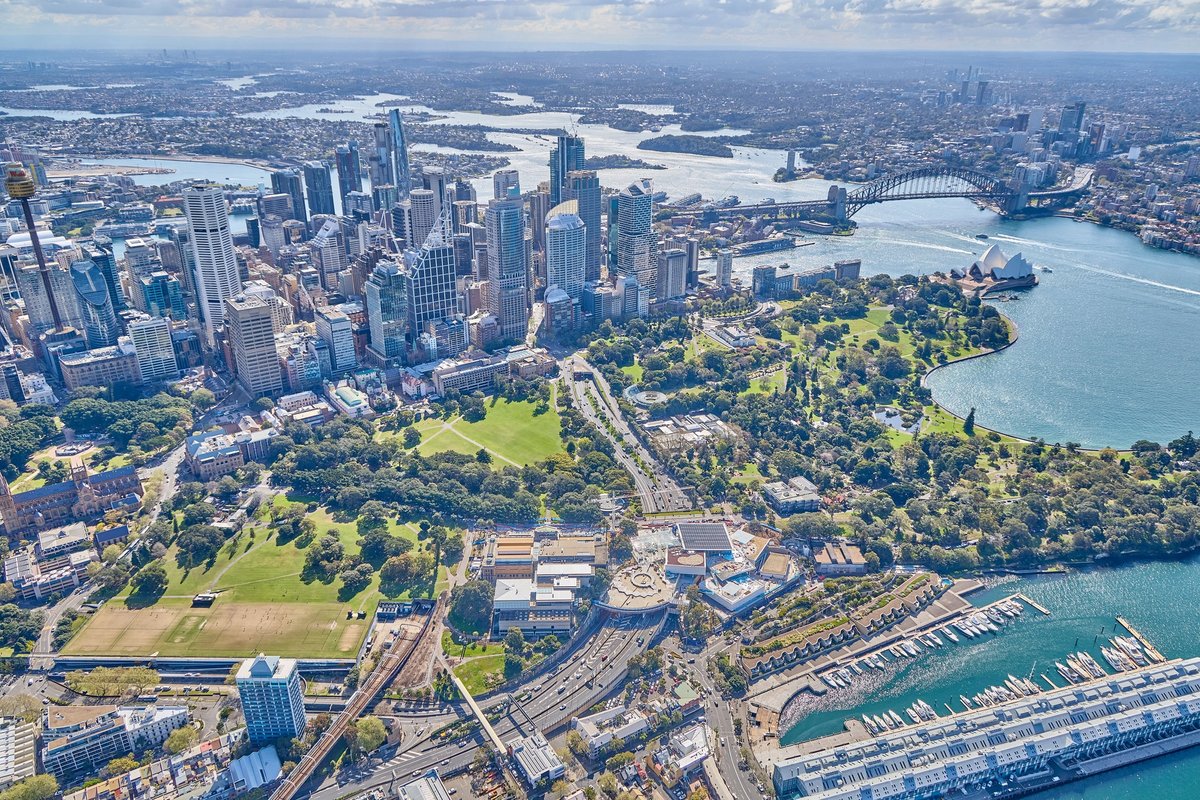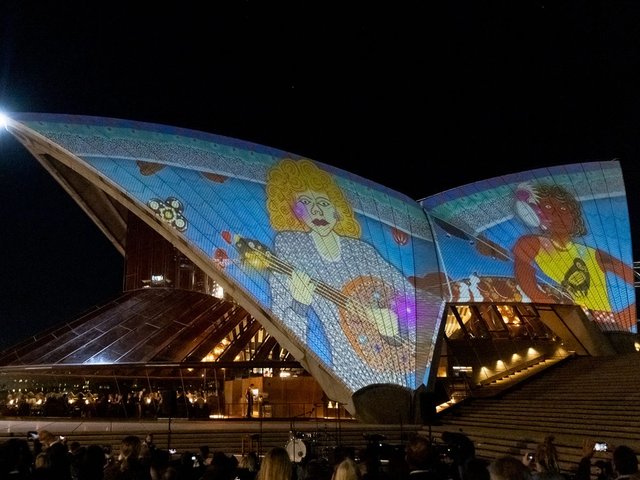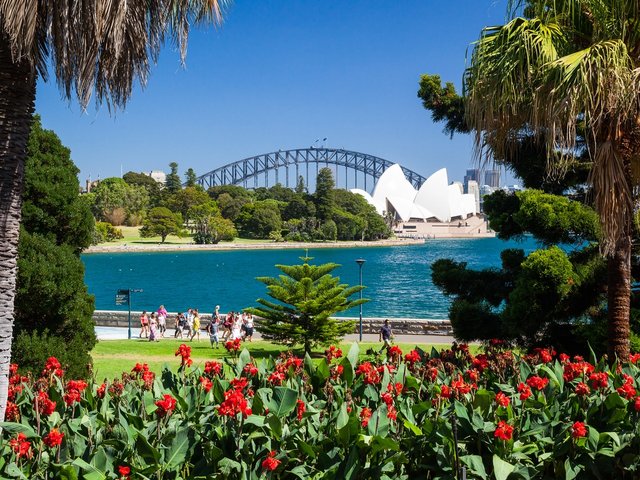Sydney Harbour is one of the most spectacular natural settings for a city in the world. From Sydney Heads, sandstone cliffs rise and fall along sheltered bays and windswept bluffs, stretching to central Sydney before greeting the Parramatta River in the city’s west.
Over the years a handful of building projects have successfully matched the harbour’s majesty. Jørn Utzon’s remarkable Sydney Opera House, known the world over, is one striking example; Sydney Harbour Bridge is another. The Art Gallery of New South Wales’s new building, designed by Tokyo-based Pritzker Prize-winning architects SANAA, which opens on 3 December, hopes to join them.
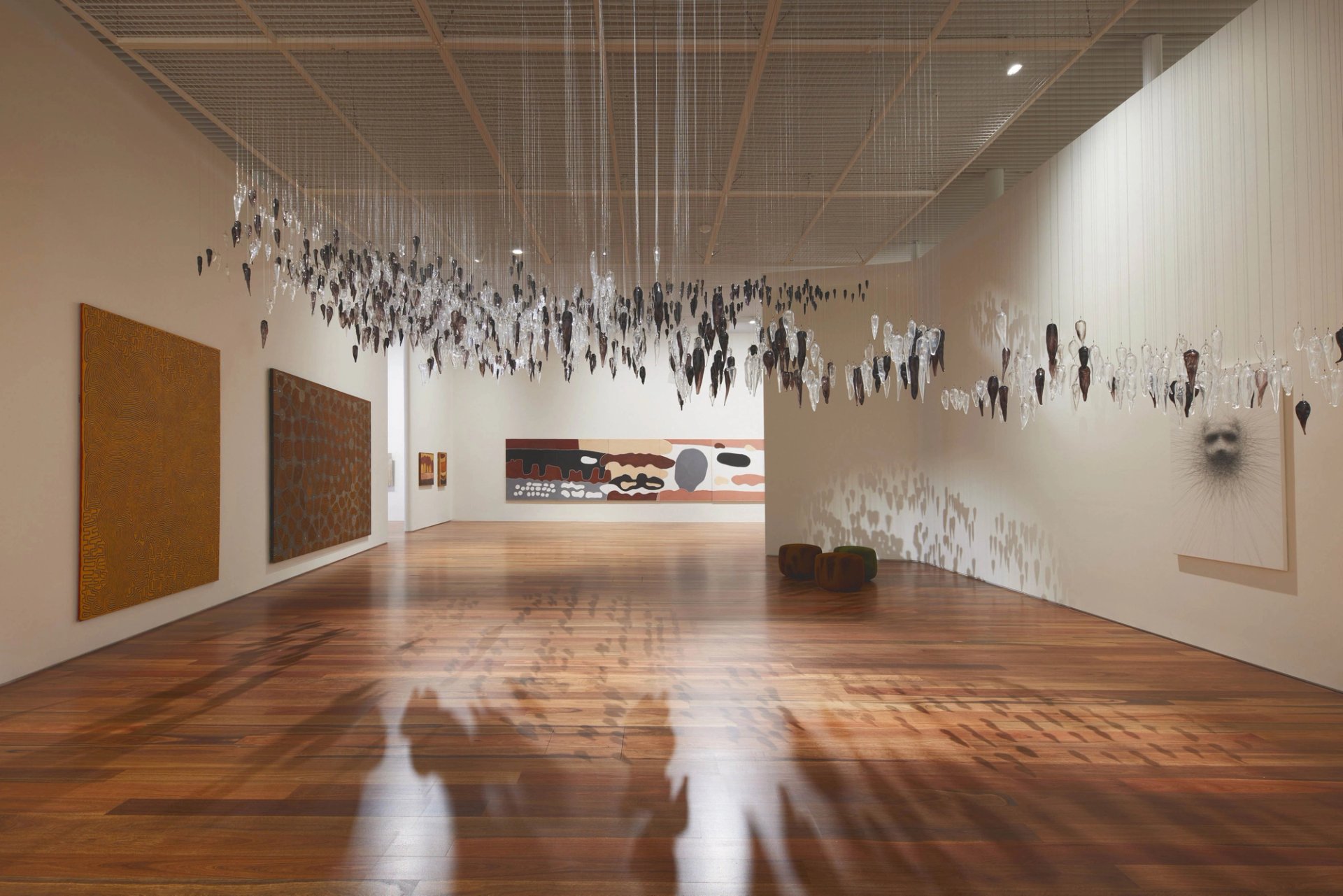
The new Yiribana gallery of Indigenous art is the first that visitors will enter Photo: Jenni Carter; © Art Gallery of New South Wales
It is part of the Sydney Modern Project, the largest transformation in the gallery’s 151-year history: bringing together a vast new building, new civic spaces, a unique subterranean exhibition space and a refurbishment of the original 19th-century Neo-Classical sandstone building.
Michael Brand has been the director of the museum since he returned to Australia in 2012, after 12 years in North America as director of the Virginia Museum of Fine Arts in Richmond, the J Paul Getty Museum in Los Angeles and the Aga Khan Museum of Islamic art in Toronto. At all three institutions, Brand oversaw major building works, but nothing of the scale and complexity of the Sydney Modern Project.

Michael Brand, director, Art Gallery of New South Wales Photo: Anna Kucera
In 2013, just eight months into his tenure, Brand announced the plans to construct a new building on land to the north of the museum in Sydney’s Domain parkland—34 hectares of green space abutting the central business district. The Sydney Modern Project emerged from a 2011 masterplan to transform the Art Gallery of New South Wales into an art museum worthy of its remarkable location.
For the project to go ahead, the gallery needed to acquire land from its neighbours: including a land bridge over a highway and open space overlooking the water—a highly sought after commodity in Australia’s most populous city—which sat atop two decommissioned Second World War oil tanks.
While few could deny the gallery needed investment, detractors took aim at the proposed site. The former Australian prime minister Paul Keating accused the gallery of “cultural snobbery about the harbour”, arguing instead that the expansion be built to the south. But in a city where a waterfront property can set you back A$100m ($65m), Brand believes the new building, with its glass-walled exteriors, and civic spaces that remain accessible when the gallery is closed, helps “democratise the waterfront”.
‘You only get one chance every couple of generations. You don’t want to blow the site on a project that isn’t worthy of it’Michael brand, director,
Art Gallery of New South Wales
“People don’t necessarily come to an art museum for an art history lesson. What we’re trying to do is provide a certain experience of not just art, but also architecture, and landscape, with a really deep sense of place,” says Brand. That sense of place, of being in Sydney, had been lacking from the site since the government reorientated the original building away from the harbour in the late 19th century.
Other key motivations behind the project were to provide the gallery with space to display much more of the gallery’s collection of 36,000 objects, and to cater to constantly evolving forms of art. For several decades it has wrestled with the limitations of its original building, built in an era of salon-style exhibitions and figurative sculptures inspired by antiquity.
Art in the landscape
Over the years, several extensions have been added. The Captain Cook Wing opened in 1972. The four-storey Bicentennial Wing opened in 1988. A second Asian gallery opened in 2003. And in 2011 a lower-level storage area was converted into exhibition space to accommodate Sydney art impresario John Kaldor’s donation of more than 200 works by the likes of Robert Rauschenberg and Jeff Koons. By that point “there was simply no way of carving out any more space in the building”, says Brand.
But this is by far the biggest extension in the gallery’s 151-year history. With A$244m from the NSW government and A$100m from private donors, it is the largest public-private partnership achieved to date in Australia and the biggest cultural investment in the state since the Sydney Opera House. “You only get one chance every couple of generations,” says Brand, “you don’t want to blow the site on a project which isn’t worthy of it.”
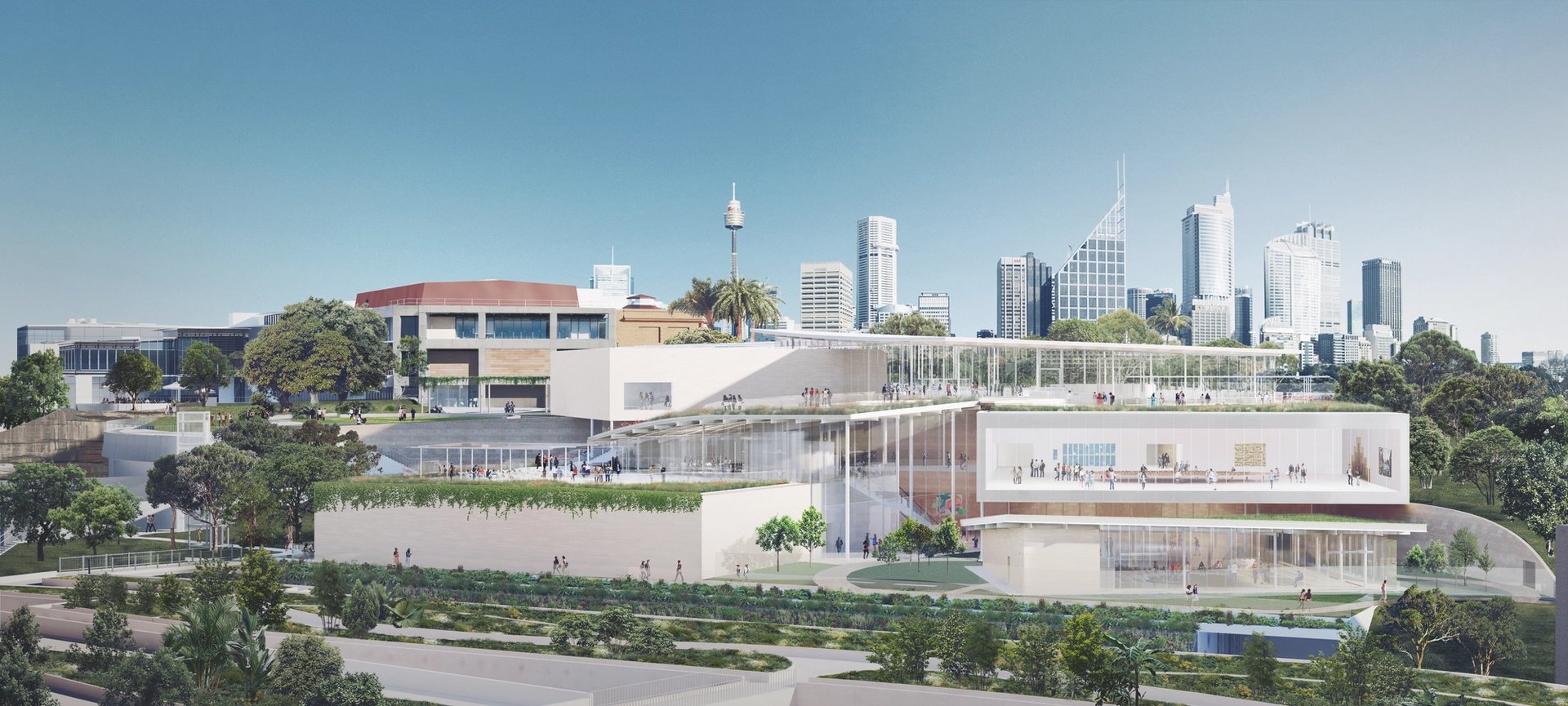
This architectural render shows the three limestone-clad art pavilions which make up the new building Kazuyo Sejima + Ryue Nishizawa / SANAA; © AGNSW
An international architectural competition was launched in 2014. In 2015 the jury unanimously selected Tokyo-based architects SANAA as the winner. Their proposal included a series of linked pavilions that followed the topography of the land from Art Gallery Road down to Woolloomooloo Bay. Another thing that set SANAA’s proposal apart was that it incorporated one of the two Second World War oil tanks into their design.
SANAA’s design was finalised through a series of workshops. During this phase the area between the two buildings became the third major element in the project. For Brand it was an opportunity too good to miss: “I’ve always been interested in that idea of gardens as a place of thinking, of action, or art and performance.”
The new building will have a “more porous connection between indoors and outdoors,” he explains. “You’re experiencing art, and landscape, and art in the landscape.” A centrepiece will be the garden linking the two buildings, due for completion in mid-2023, which includes a commission by Wiradyuri and Kamilaroi artist Jonathan Jones.
Other outdoor highlights incorporate the Welcome Plaza; a 1984 iteration of Joseph Beuys’s 7000 Oaks project; and two new reflecting pools on the forecourt of the original building, designed by Kathryn Gustafson.
Leading the way with Indigenous art
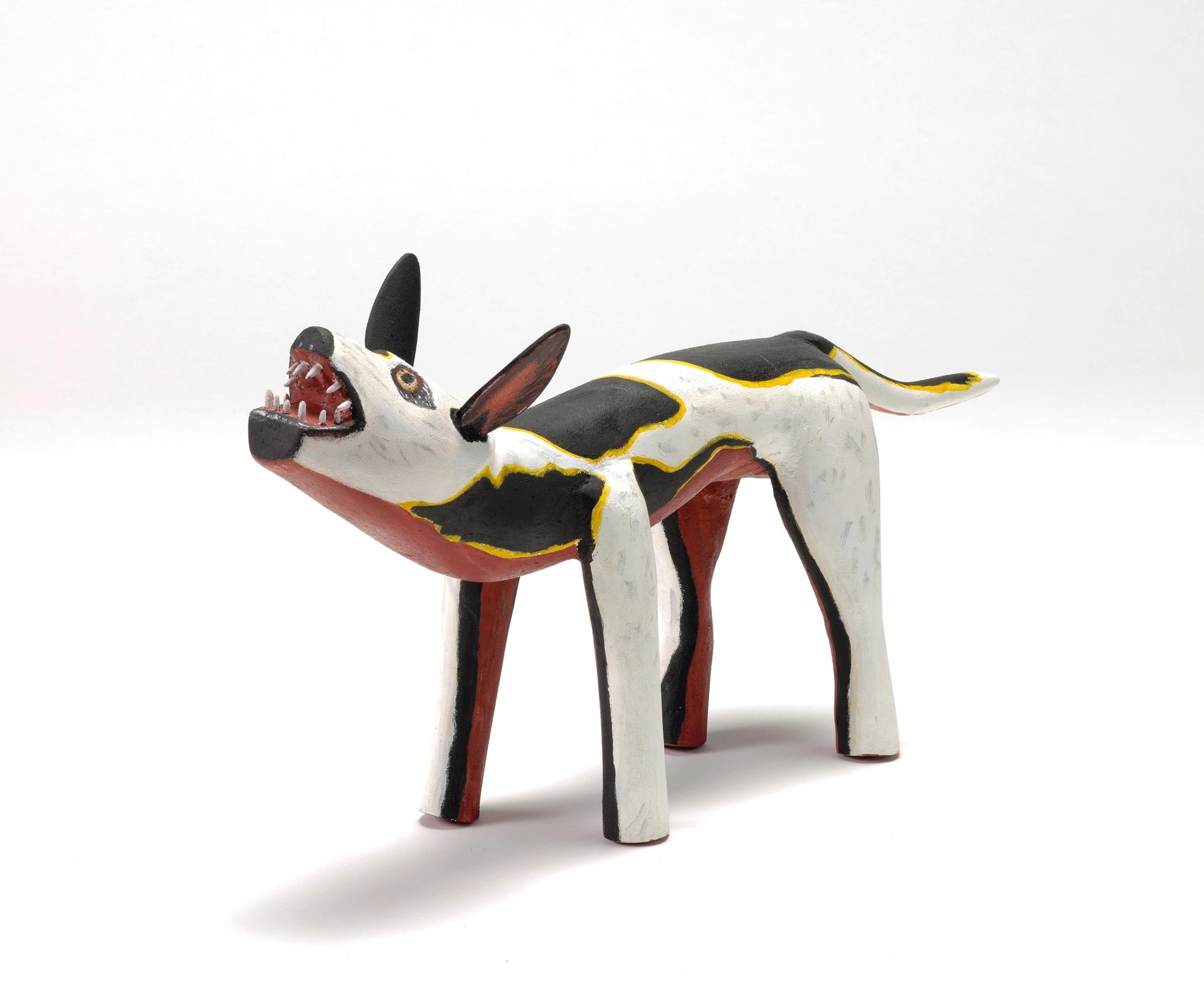
Ku’ Konh min-ak! (2021) by the Indigenous artist Leigh Namponan © Art Gallery of New South Wales
This once-in-a-generation project also provided an opportunity to address shortcomings within the collection. “We’re not going to build a great new museum for the future if we don’t understand our past,” says Brand. Recent changes include a reconfiguration of the 20th-century galleries that places Australian artists alongside their global contemporaries. “We believe Australian artists have always been very international and outward looking. We want to show that in the way we show their work.”
In the rehang, a Cubist-inspired portrait by the Sydney Modernist Grace Crowley, Portrait of Lucie Beynis (1929), ushers in the gallery’s early 20th-century collection. Downstairs in the late 20th-century galleries, Australian artist Lesley Dumbrell’s Solstice (1974), a sizzling work of geometric abstraction, is viewed in the same room as Frank Stella’s Khurasan Gate variation II (1970). By displaying women artists, particularly in areas where in the past their work was often overlooked, the gallery has achieved greater gender parity across the works on display. In the new building, more than half of the works are by women artists and six of the nine new site-specific commissions are by women (see sidebar, right).
But by far the biggest change is the greater prominence given to Aboriginal and Torres Strait Islander art, including new approaches that place Indigenous perspectives alongside works from the Western canon. “For a lot of tourists who come [to Australia], Sydney might be the only city they visit. We have a responsibility to put our culture in context, particularly Indigenous culture,” says Brand.
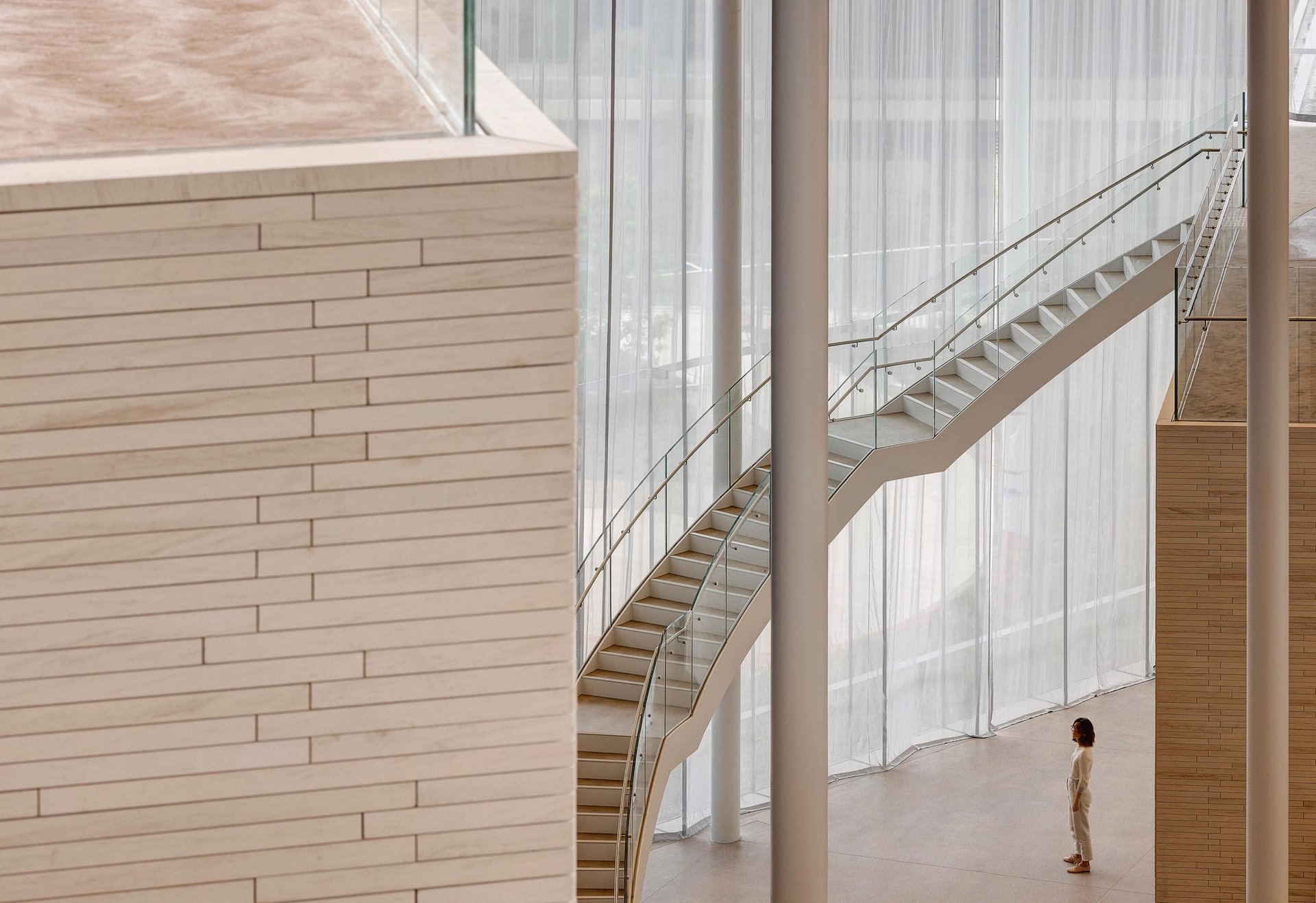
The atrium of the new building is light and spacious © Art Gallery of New South Wales
In the recently refurbished Grand Courts, which predominantly house historical paintings and sculptures, curators have incorporated works from contemporary artists “to ensure that there was an Indigenous perspective included in particular moments where it makes sense”, says Cara Pinchbeck, the senior curator of Aboriginal and Torres Strait Islander art. In one space, in Wiradjuri artist Brook Andrew’s series of five sculptural vitrines Tombs of Thought, (2017-18), archival materials challenge the colonial narratives depicted on the walls.
Although this approach sounds simple, in execution it “forced curators to work together more collaboratively across the curatorial teams than perhaps we’ve ever worked in the past”, says Pinchbeck. “It was difficult, but I think it was worth the complexities in terms of the results.”
Underlining the commitment to Indigenous art is the new prominent location of the Yiribana Gallery, the gallery’s home of Aboriginal and Torres Strait Islander art since 1994. Although when it opened it was arguably the largest space dedicated to displaying Indigenous Australian art and culture anywhere in the world, until quite recently Yiribana had languished on the lowest level of the original building.
Yiribana, which means “this way” in the language spoken by the Gadigal people, the traditional custodians of the land on which the gallery stands, is now the first of three limestone-clad art pavilions visitors enter in the new building. Yiribana’s opening display was inspired by the notion of burbangana, which translates as “take hold of my hand and help me up”. The curatorial team rejected a chronological hang in favour of showing works from across different times and places.
Now, with the building’s construction and art installation complete, the stage is set. For Brand, whose directorship has been focused on the Sydney Modern Project since day one, it feels like a new beginning. “Ten years ago, the point was to build a building [that allowed us] do what we needed to do. Now we have to do it,” he says. “It’s a rare opportunity for an art museum director to open such a space with such extraordinary history. What we’re doing here is very much reflecting a sense of place, on Gadigal Country, here in Sydney.”
Sydney Modern commissions
To celebrate the opening of the new building, the gallery has commissioned new works from nine artists from Australia and across the world.
Lorraine Connelly-Northey
The loggia of the Yiribana Gallery on the new building’s entrance level is filled with the Waradgerie (Wiradjuri) artist Lorraine Connelly-Northey’s Narrbong-galang (many bags), made from rusted and salvaged metals.
Karla Dickens
A niche left unfilled on the original building’s façade has been occupied by a glass panel exploring the legacies of colonialism and patriarchy by Wiradjuri artist Karla Dickens.
Simryn Gill
Simryn Gill’s work is a life-sized rubbing of a tree, planted in 1909, that was removed from the Sydney Modern Project site.
Jonathan Jones
Wiradyuri and Kamilaroi artist Jonathan Jones has created a work, due for completion in mid-2023, that links the new and existing gallery buildings and responds to the site’s location on Gadigal land.
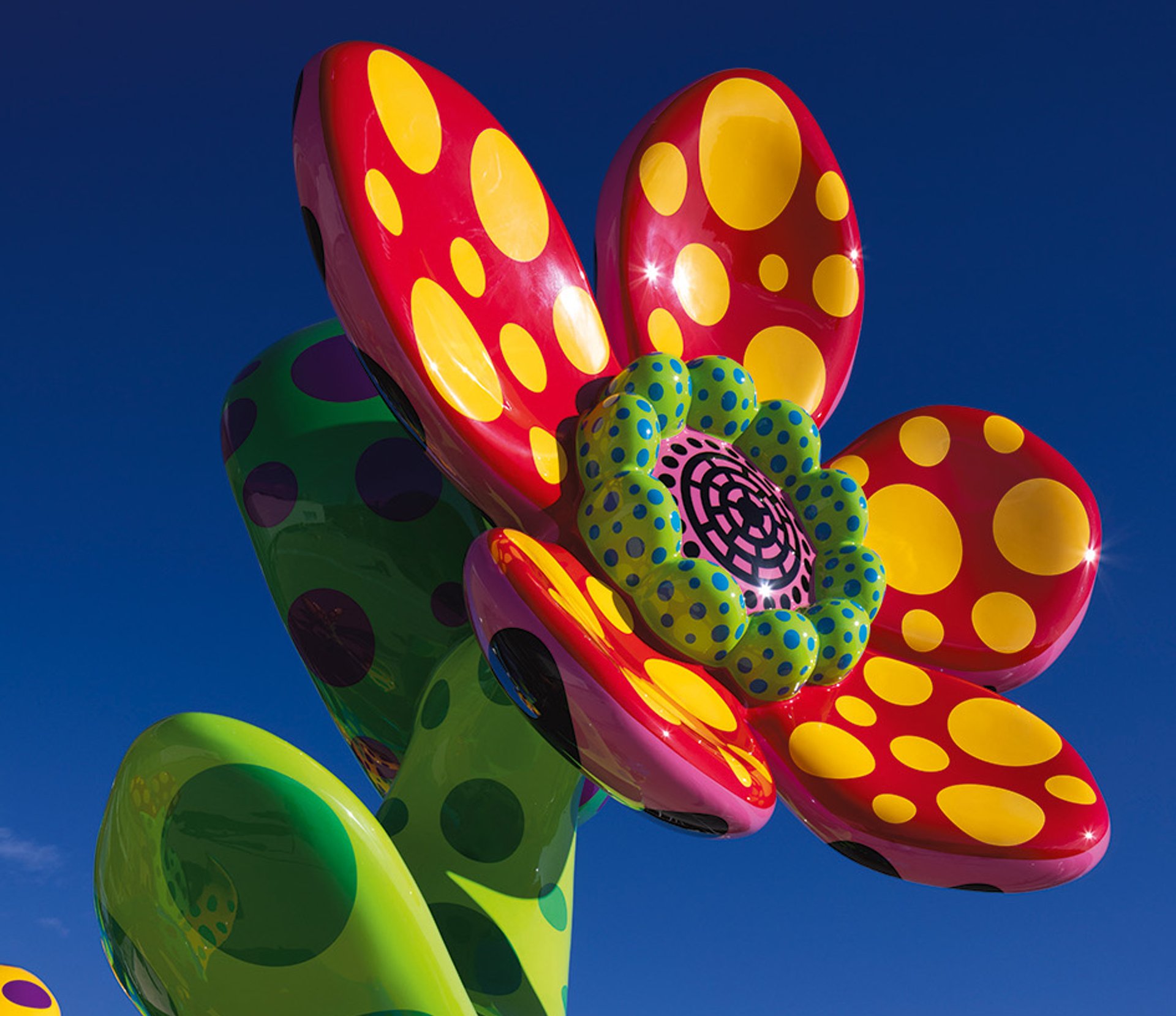
Yayoi Kusama's sculpture sits on the new building’s terrace overlooking Woolloomooloo Bay Photo: Brett Boardman
Yayoi Kusama
Japanese artist Yayoi Kusama has created an exuberant floral sculpture that will be visible day and night, prominently positioned on the new building’s terrace overlooking Woolloomooloo Bay.
Richard Lewer
Richard Lewer has gone behind the scenes to capture the stories and portraits of people involved in the design and construction of the Sydney Modern Project in a multi-panel painting and series of drawings.
Lee Mingwei
Taiwanese American artist Lee Mingwei visited the gallery several decades ago and asked a Buddha sculpture for its blessing. He returns the favour with a new work, incorporated into the building’s fabric.
Lisa Reihana
Māori artist Lisa Reihana has created a monumental moving-image work that overlooks the central atrium in the new building. It is a dazzling sci-fi tale set between New Zealand and Australia.
Francis Upritchard
In the new building’s Welcome Plaza, Francis Upritchard has brought her monumental figures inspired by mythology and folklore—and the surrounding Moreton Bay fig trees.
• Read all of our articles on the Sydney Modern Project here


